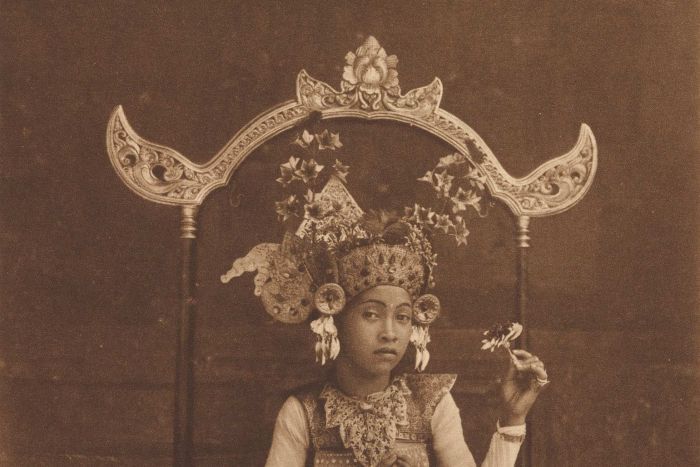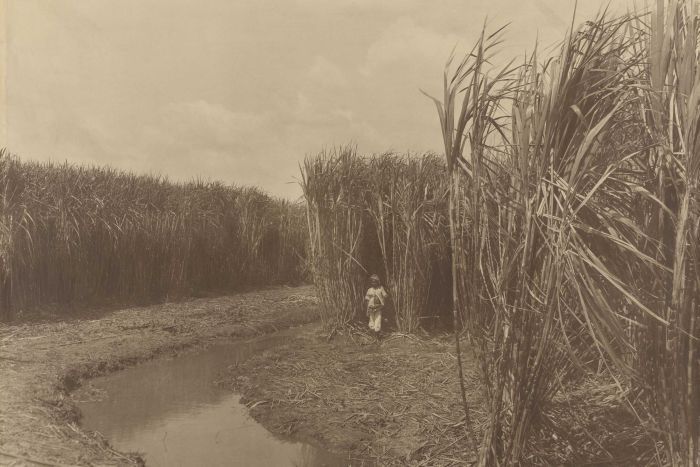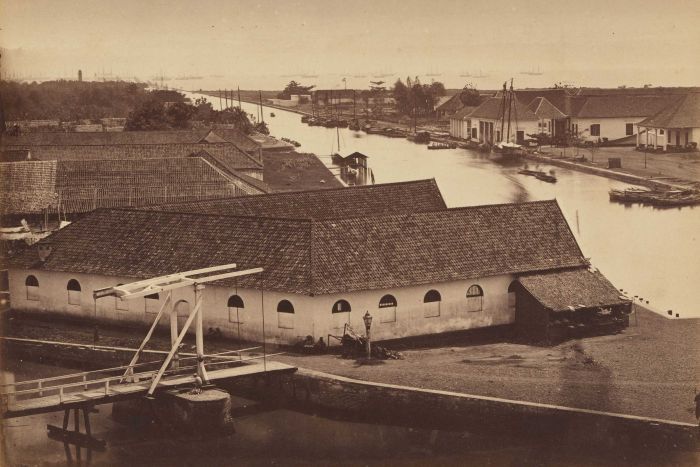Northern exposure: photography show kicks off year of Indonesian art at National Gallery
Updated
Indonesia has been prominent in the headlines in Australia for political reasons, but the National Gallery of Australia (NGA) hopes to raise the country's profile in the art world this year.
Documenting Indonesian art and culture was a priority for the NGA at its inception in 1967, but its focus shifted away from the region in the intervening years.
In recent years, the gallery has returned its gaze to the region.
In 2007 it acquired a collection of 8,000 photos taken by Asian and Western photographers in the 19th and 20th centuries.
Scholars have spent seven years cataloguing and researching the images.
Around 250 photos, just a small percentage of the collection, are on show in the free exhibition 'Garden of the East: photography in Indonesia 1850s - 1940s'.
Senior photography curator Gael Newton says Indonesia does not have an archived collection of the same scale as the one in Canberra.
"There's no similarly accessible and catalogued archive equivalent in Indonesia," she said.
Indonesian scholars have been coming to the NGA to research the works.
In the academic and cultural realms there are many Australian institutions leaping at the chance to specialise in Indonesian scholarship.
"Australia is going to have a very intense future now," Ms Newton said.
"In so many areas we are a centre for Indonesian studies - in the universities and the collections like our wonderful textile collection.
"That's what we hope, we want to see people making a beeline to not only use our resources but tell us about them."
Exhibition frames Indonesian culture
The pictures in the exhibition are of the nation next door, but they might as well come from another world.
The images include dreamy landscapes and panoramas, exotic costumes and grandiose depictions of colonial life.
The collection includes the work of professional photographers like Henri Cartier Bresson in the mid-20th century.
A century before that, adventurous and often itinerant photographers made a living from the relatively new trade of photography, documenting the strange landscape and taking studio portraits of Indigenous people in exotic dress.
There are even family albums from amateur Dutch photographers who took snaps of their experiences in towns and on plantations.
So-called 'trade' photos were taking to document the wealth of the land. Pepper, kapok (Java cotton) and cane were all harvested.
Ms Newton says the message of such shots was, 'Come out here, you too can knock down a virgin forest and put a plantation of some kind'.
"Around the end of the 19th century you see a trend towards a more aesthetic and promotional photography," she said.
A nation Australia has grown alongside
Indonesia attained independence from the Dutch in 1945, less that 50 years after Australia became a federated nation.
NGA director Ron Radford said Australians should know more about the history of a nation their country has grown alongside.
"We are delighted to host this exhibition and believe that Australia's geographic, political and cultural position in the Asia-Pacific region makes it very appropriate that the National Gallery of Australia should celebrate the rich and diverse arts of our region," he said.
"It's always been an interesting relationship - probably a very close relationship with the people - and I hope this exhibition helps."
Ms Newton agrees.
"[Curating] this show has taught me how to be a citizen of the Asia-Pacific," she said.
The NGA's focus on Indonesia will continue all year, with the first survey of Balinese art to be shown in Australia opening at the Gallery this June.
Topics: photography, act, indonesia, canberra-2600
First posted


















